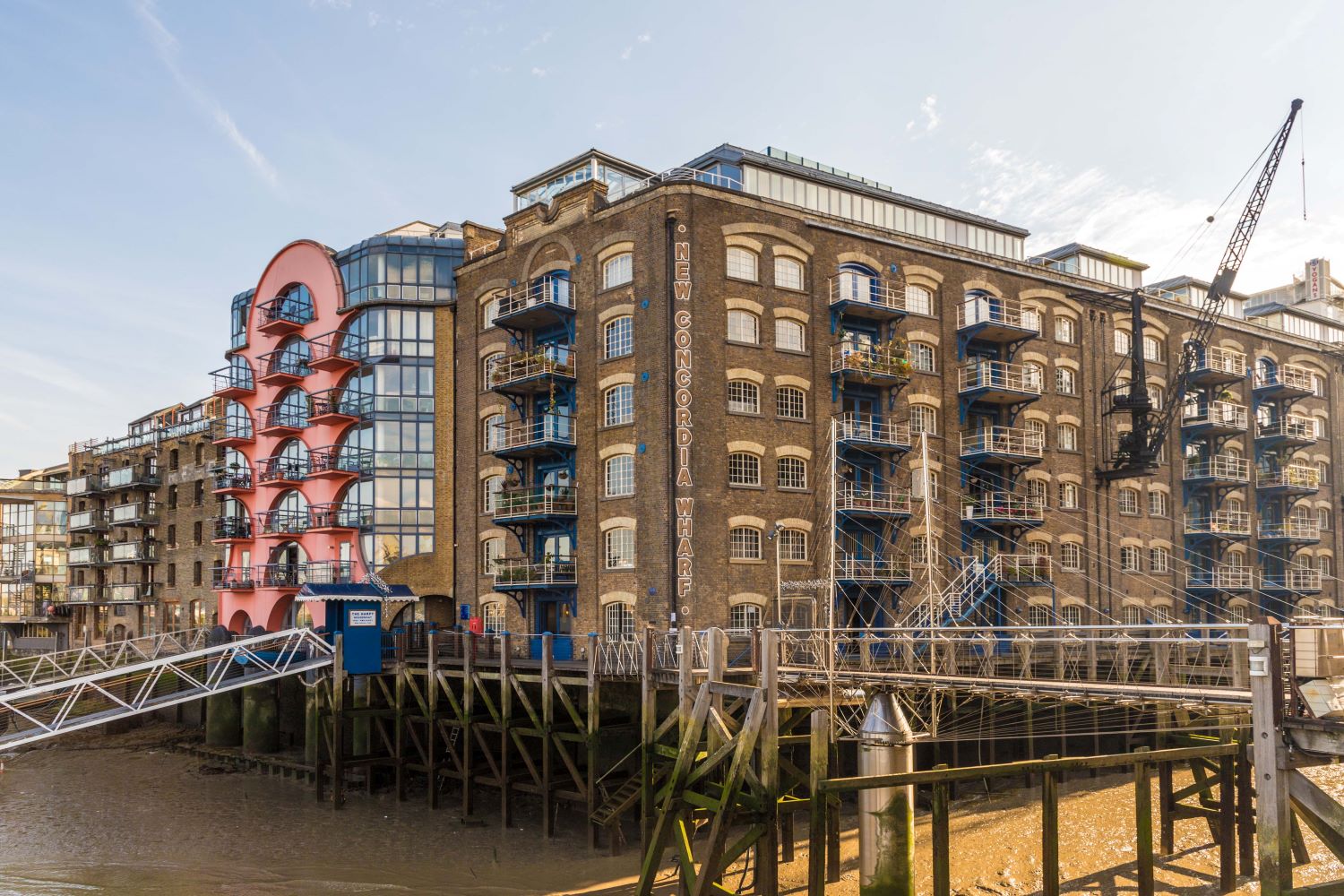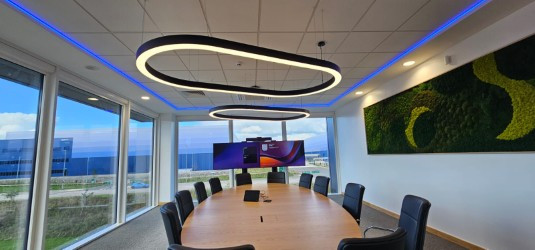Are empty desks a construction opportunity?
The COVID-19 pandemic fundamentally altered the way we are employed. With millions transitioning to remote work, office buildings across the Western world stand eerily empty, sparking a critical question - what will become of all this unused space – or more importantly, could this be a massive opportunity for the construction industry, writes John Ridgeway?
According to a 2023 report by Owl Labs, a provider of video conferencing solutions, 49% of global workers are now working remotely at least some of the time, with North America and Europe leading the trend. Further evidence comes from a Stanford University study which revealed that in the US alone, over 40% of the workforce can effectively work from home.
This dramatic shift has left many office buildings partially or entirely vacant. While some companies are returning to pre-pandemic occupancy levels, a complete rebound seems unlikely. A report by CBRE, a global real estate advisor, (more about this later) suggests that office space demand will permanently decline by 10% in major US cities and this is a pattern that is likely to be replicated across the world.
An ideal opportunity
On face value it would seem like an ideal opportunity for the construction industry to use these offices for housing, particularly as many are situated in town or city centre locations. However, quantifying the exact potential in cash terms for the construction industry in office-to-residential conversions is challenging due to several factors.
Conversion projects vary greatly in size, location and complexity, meaning that overheads can vary enormously depending on factors like the condition of the existing building, the desired level of finishes in the converted units and local construction costs.

While there is a growing interest in office-to-residential conversions, it's still a relatively new trend. Comprehensive data on the total national or global market value for such projects is scarce.
However, while hard numbers are elusive, the potential for the construction industry in office-to-residential conversions seems significant. Growing demand for housing, coupled with a surplus of underutilised office space, creates a compelling economic opportunity – and we can see that several construction companies are already ahead of the game.
The IMT Group in Chicago, for example, have converted a former 19-story office building into a mixed-use development with 223 apartments, ground-floor retail space, and a public plaza. In Culver City, California, what was once a collection of low-rise office buildings is now a vibrant mixed-use space with apartments, creative office suites, restaurants, shops and outdoor green spaces.
Vibrant use of space
Major players such as Skanska, have turned a 1920s-era office building in Seattle's South Lake Union neighbourhood into a 22-story apartment building with 221 micro-units, targeting young professionals and urban dwellers. We are also seeing luxury apartments being developed and refurbished in London, Amsterdam and several other cities, but what created this situation in the first place – let’s remind ourselves.
The pandemic forced many companies to experiment with large-scale remote work arrangements. Many have since discovered that remote work can be productive and cost-effective, leading them to enact hybrid work models or even fully remote work options. This reduces the need for traditional office space for all employees.
Video conferencing platforms and cloud-based collaboration tools have also made it easier for teams to communicate and work together effectively, even when geographically dispersed. This reduces the need for in-person meetings and physical collaboration spaces in an office.
As a result, many employees now appreciate the flexibility and work-life balance that remote work offers. A study by FlexJobs revealed that 38% of workers would quit their jobs for a remote work option. Companies looking to attract and retain talent now need to offer flexible work arrangements, further reducing the need for traditional office setups.
Evaluating costs
Companies are also constantly evaluating costs. Maintaining large, underutilised office spaces can be expensive and reducing office footprints can lead to significant cost savings on rent, utilities and maintenance.
The CBRE report, titled "The Remote Work Revolution and its Impact on Office Demand," mentioned earlier in this blog, analysed various factors, to support the movement to working from home.
Pre-pandemic office space vacancy rates, they said, were already on the rise in some major cities due to factors like overbuilding and changing business models. This has contributed towards to shifting company space requirements leading to a remote work ethic. Flexible workspace options, such as hot desking, are also becoming increasingly popular, potentially further reducing the demand for traditional office leases.
Based on this analysis, CBRE projects a 10% permanent decline in office space demand in major US cities. It's important to note that this is a prediction, and the actual figure could be higher or lower depending on how various factors play out.
Looking Ahead
However, while the future of office space is uncertain, it seems clear that a significant downturn in demand is here to stay. This means that the construction industry can play a key role in adapting to this new reality by focusing on transforming vacant office buildings into residential units, co-working spaces, or community centres.
Such refurbishments offer additional benefits, as by upgrading existing buildings to be more energy-efficient and sustainable they are more likely to attract environmentally conscious tenants.
Without doubt, new opportunities exist, but there are challenges to consider. Long term, converting office buildings to residential units may require changes to zoning regulations, which can be a slow and bureaucratic process. Renovating existing buildings can also be expensive and rising construction costs could put a damper on adaptive reuse projects. We also know that the long-term demand for office space remains uncertain, making it risky for developers to invest in large-scale conversions.
Time will tell, of course, but the future of office space is not about complete abandonment, more about adaptation and evolution. The construction industry is well-positioned to play a key role in this process. By embracing innovation, developing sustainable practices, and adapting to changing needs, the construction industry can help transform empty office buildings into vibrant spaces that meet the needs of a post-pandemic world – and most importantly – provide badly needed homes and community amenities.
Sources:
- Owl Labs 2023 State of Remote Work Report: https://resources.owllabs.com/state-of-remote-work
- Stanford University - Economic Policy Institute: https://siepr.stanford.edu/publications/policy-brief/how-working-home-works-out
- CBRE Group - The Remote Work Revolution and its Impact on Office Demand: https://www.cbreim.com/insights/articles/stcwc-how-the-rise-of-remote-work-is-changing-the-real-estate-landscape
- IMT Group - 1000 South Desplaines: https://www.marketplace.org/2022/10/04/chicago-iconic-office-buildings-apartment-conversions/
- https://www.marketplace.org/2022/10/04/chicago-iconic-office-buildings-apartment-conversions/
- https://www.bizjournals.com/losangeles/news/2023/09/15/la-research-office-residential-conversions.html
- https://www.kuow.org/stories/some-underused-seattle-office-buildings-could-be-converted-to-apartments
Additional Blogs

Utilities consultants: providing the vital support every construction project needs
The UK’s cost of living crisis is adding significant financial challenges for everyone across the built environment, not least property developers and builders. While utilities consultants can’t do...
Read moreWhy cutting down trees will not solve the UK’s subsidence crisis
Across the UK, thousands of healthy, mature trees are being cut down each year in the name of protecting homes from subsidence. The issue is especially acute in the clay areas of southern England,...
Read more

The changing face of workplace AV and what FM managers need to know
In today’s hybrid workplaces, facilities managers can no longer treat audio-visual systems as background infrastructure - they are now mission-critical assets that directly influence productivity,...
Read more